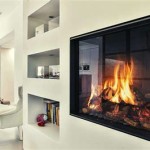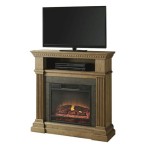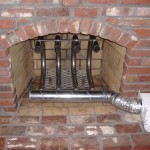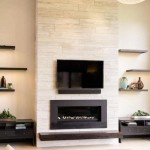Indoor Fireplace Stone: A Comprehensive Guide
Indoor fireplaces provide warmth, ambiance, and a focal point within a home. The aesthetics of a fireplace are significantly influenced by the type of stone used in its construction or renovation. Selecting the appropriate stone requires careful consideration of various factors, including the stone's appearance, durability, maintenance requirements, and cost. This article provides a comprehensive overview of indoor fireplace stone, covering popular stone types, design considerations, installation aspects, and maintenance practices.
Popular Stone Types for Indoor Fireplaces
Numerous stone types are suitable for indoor fireplace applications, each possessing unique characteristics that contribute to the overall aesthetic and performance of the fireplace. Some of the most popular options include:
Natural Stone Veneer: This option consists of thin slices of natural stone adhered to a backing material. Natural stone veneer offers the aesthetic appeal of solid stone at a reduced weight and cost. Common types include slate, limestone, granite, and quartzite. The variation in color and texture inherent in natural stone ensures a unique appearance for each fireplace.
Manufactured Stone Veneer: Also known as faux stone, manufactured stone veneer is a concrete-based product designed to replicate the look and feel of natural stone. It is generally lighter and less expensive than natural stone veneer, making it a popular choice for homeowners on a budget. Manufactured stone veneer is available in a wide range of colors, textures, and styles, allowing for versatile design options.
Fieldstone: Characterized by its rounded, irregular shapes, fieldstone provides a rustic and natural appearance. Traditionally gathered from fields and riverbeds, fieldstone is often used to create a visually striking and textured fireplace surround. Due to its irregular shape, installation can be more labor-intensive compared to other stone types.
Ledgestone: Ledgestone comprises thin, stacked pieces of stone, typically rectangular or square in shape. This stone type offers a contemporary and linear look. It is available in both natural and manufactured varieties. The relatively uniform shape of ledgestone simplifies installation compared to fieldstone.
Brick: While technically not a stone, brick is a common and versatile material used in fireplace construction. It offers a classic and timeless aesthetic. Brick is durable, fire-resistant, and relatively easy to maintain. It can be painted or stained to achieve different color and style variations.
Granite: A durable and igneous rock, granite offers a sophisticated and elegant look. It is available in a variety of colors and patterns, often featuring intricate veining. Granite is resistant to heat and scratches, making it a practical choice for fireplace surrounds and hearths.
Marble: Known for its luxurious appearance and smooth texture, marble adds a touch of opulence to any fireplace design. It is available in a range of colors, from classic white to vibrant hues. Marble is relatively soft and porous, requiring careful sealing to prevent staining.
Limestone: Limestone offers a natural and earthy aesthetic. It is a sedimentary rock with a relatively uniform texture and color. Limestone is often used in traditional and rustic fireplace designs. It is more porous than granite or marble and requires sealing to protect against moisture and staining.
Soapstone: A dense and heat-resistant stone, soapstone is an excellent choice for fireplace surrounds and hearths. It has a smooth, matte finish and a distinctive dark gray color. Soapstone is relatively soft and can be easily scratched, but it is also highly resistant to staining and chemical damage.
Design Considerations for Fireplace Stone
Selecting the right stone is only one aspect of designing a visually appealing and functional fireplace. Several other design considerations should be taken into account:
Style and Aesthetics: The stone chosen should complement the overall style and décor of the room. For instance, a rustic style home might benefit from fieldstone or ledgestone, while a modern home might be better suited for granite or manufactured stone veneer with clean lines.
Color Palette: The color of the stone should harmonize with the existing color palette of the room. Consider the color of the walls, flooring, and furniture when selecting the stone. Neutral colors such as gray, beige, and white are versatile and can complement a wide range of décor styles.
Texture and Pattern: The texture and pattern of the stone can add visual interest and depth to the fireplace surround. Consider whether a smooth, uniform texture or a rough, irregular texture is more desirable. The pattern of the stone can also contribute to the overall aesthetic. For example, stacked ledgestone creates a linear pattern, while fieldstone creates a more organic and random pattern.
Scale and Proportion: The size and proportion of the stone should be appropriate for the size of the fireplace and the room. Using excessively large stones in a small room can make the space feel cramped, while using too small stones in a large room can make the fireplace appear insignificant. The dimensions of the fireplace surround should also be proportional to the height and width of the firebox.
Hearth Design: The hearth is the area in front of the fireplace opening. It is typically made of stone or other non-combustible material. The hearth should be large enough to protect the surrounding flooring from sparks and embers. The design of the hearth should complement the design of the fireplace surround. Consider using the same stone for both the surround and the hearth to create a cohesive look.
Mantel Design: The mantel is a shelf or structure above the fireplace opening. It can be made of wood, stone, or other materials. The mantel should be designed to complement the style of the fireplace and the room. Consider the size and proportion of the mantel in relation to the fireplace surround. A mantel can be used to display decorative items such as artwork, photographs, and candles.
Lighting: Proper lighting can enhance the appearance of the fireplace and create a warm and inviting ambiance. Consider installing recessed lighting above the fireplace to highlight the stone. Alternatively, sconces or lamps can be placed on either side of the fireplace to provide additional illumination. Fireplace inserts with built-in lighting are also an option.
Installation and Maintenance of Fireplace Stone
Proper installation is crucial for the longevity and performance of a stone fireplace. It is generally recommended to hire a qualified contractor with experience in stone installation. The installation process typically involves the following steps:
Preparation: The area where the stone will be installed must be clean, level, and structurally sound. Any existing wall coverings should be removed, and the surface should be prepared to receive the stone.
Mortar Application: A thin-set mortar is applied to the back of the stone and to the wall. The mortar serves as an adhesive, bonding the stone to the wall.
Stone Placement: The stones are carefully positioned on the wall, ensuring proper alignment and spacing. Spacers can be used to maintain consistent grout lines.
Grouting: Once the mortar has dried, grout is applied to fill the gaps between the stones. The grout is typically the same color as the stone or a complementary color.
Sealing: Depending on the type of stone, sealing may be necessary to protect it from moisture and staining. A sealant is applied to the surface of the stone, creating a barrier against liquids and dirt.
Cleaning and Maintenance: Regular cleaning is essential to keep the fireplace stone looking its best. Dust and debris can be removed with a soft brush or vacuum cleaner. Spills and stains should be cleaned up immediately with a mild detergent and water. Avoid using harsh chemicals or abrasive cleaners, as they can damage the stone. Periodic sealing may be required to maintain the stone's protective barrier.
Specific maintenance requirements vary depending on the type of stone. For example, marble requires more frequent sealing than granite. Refer to the manufacturer's instructions or consult with a stone specialist for specific cleaning and maintenance recommendations.
By carefully considering the different stone types, design considerations, and installation and maintenance practices, homeowners can create a beautiful and functional indoor fireplace that enhances the value and enjoyment of their home.

Stone Veneer Fireplace Ideas That Will Warm Up Your Home Ply Gem

Natural Stacked Stone Veneer Fireplace Ideas

4 Natural Stacked Stone Fireplaces For Your Dream Design

9 Indoor Fireplaces That Will Bring Warmth And Charm To Your Home

11 Stone Veneer Fireplace Surround Design Trends Where To Buy

Stone Veneer Interior Design Living Room Kitchen Bedroom Ideas More Buechel

50 Sensational Stone Fireplaces To Warm Your Senses

65 Best Stone Fireplace Design Ideas To Ignite Your Decor Modern Designs

Indoor Fireplace Exquisite Decor Ideas Bethlehem Masonry Supply

65 Best Stone Fireplace Design Ideas To Ignite Your Decor Designs Home Farmhouse
Related Posts








